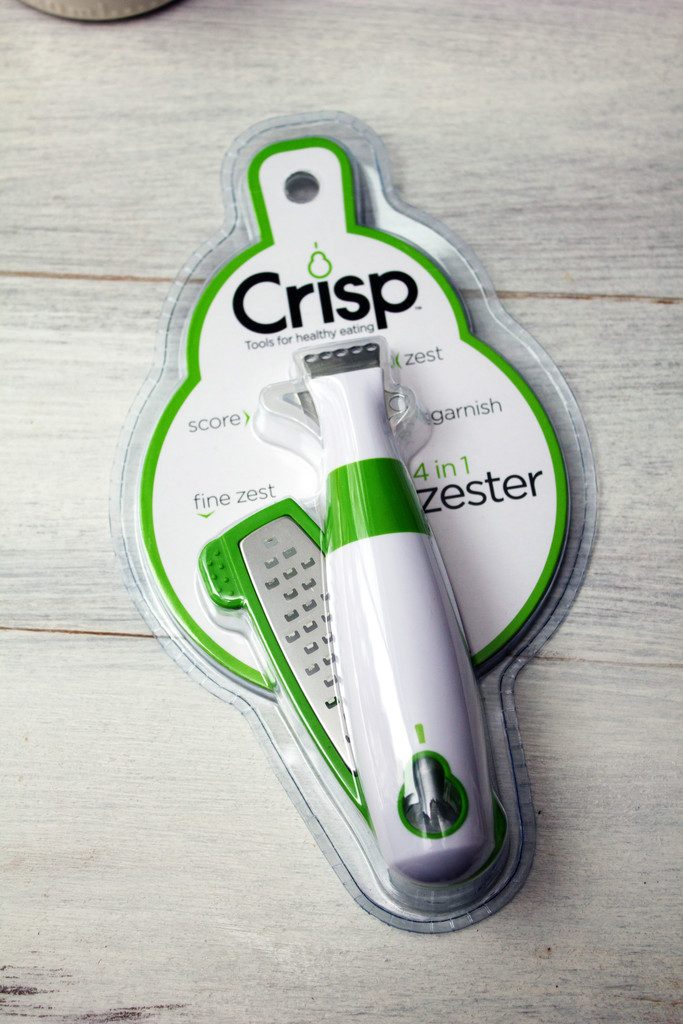A zester is a kitchen tool used for grating the outer peel or zest of citrus fruits, such as lemons, limes, oranges, and grapefruits. The zest is the colored, aromatic, and flavorful outer layer of the fruit’s skin, which contains essential oils and intense citrus flavors.

The zester typically consists of a long, slender handle and a sharp, fine-toothed grating surface. It’s designed to easily remove the zest from the fruit without digging into the bitter white pith beneath the skin. This allows you to add the bright and tangy citrus essence to various dishes, such as desserts, cocktails, marinades, and savory dishes, to enhance their flavor.
Some zesters may also have additional features, like a channeling tool on the opposite end, used to create decorative twists or strips of zest for garnishing cocktails or dishes.
Using a zester is a quick and efficient way to extract the zest from citrus fruits and can add a burst of flavor and aroma to your culinary creations.
Difference Between a Zester and a Juicer
A zester and a juicer are two different kitchen tools that serve distinct purposes:
- Zester: A zester is a tool used for grating the outer peel or zest of citrus fruits. Its main purpose is to extract the colored, aromatic, and flavorful outer layer of the fruit’s skin, known as the zest. The zest is rich in essential oils and provides intense citrus flavors to dishes. Zesters are designed to carefully remove the zest without including the bitter white pith beneath the skin.
Uses of a zester:
- Adding citrus zest to desserts, cakes, pastries, and other baked goods for flavor.
- Garnishing dishes, salads, and cocktails with decorative twists or strips of zest.
- Infusing the zest into sauces, marinades, dressings, and syrups for added citrus notes.
- Juicer: A juicer, also known as a citrus juicer, is a device used to extract the juice from citrus fruits, such as oranges, lemons, limes, and grapefruits. Juicers are designed to efficiently separate the juice from the pulp and seeds of the fruit, providing a smooth and pure liquid.
Uses of a juicer:
- Extracting fresh citrus juice for drinking, as it is or as a base for beverages like lemonade and limeade.
- Obtaining citrus juice to use in recipes that require the liquid essence of the fruit without the fibrous pulp, such as marinades, sauces, and dressings.
- Making cocktails and mocktails that require freshly squeezed citrus juice.
In summary, a zester is used to grate the flavorful outer peel (zest) of citrus fruits, while a juicer is used to extract the liquid juice from the fruit. Both tools can be handy in the kitchen, but they serve different purposes and are used for distinct culinary applications.
Cleaning a Zester vs a Juicer
The ease of cleaning a zester or a juicer depends on their specific design and construction. Generally, zesters are easier to clean compared to juicers. Here’s why:
- Zester: Zesters are relatively simple tools with a single grating surface and often have fewer parts. They are usually made of stainless steel or other non-stick materials, which makes cleaning relatively easy. Most of the time, you can quickly rinse off any residual zest using water and a brush or sponge. If you encounter stubborn bits of zest stuck in the grating surface, you can use a small brush or toothbrush to remove them effectively.
- Juicer: Juicers, especially electric juicers, can be more complicated to clean. They have multiple parts, including the juicing cone, pulp container, and juice collector. Depending on the juicer’s design, some parts might be dishwasher safe, while others may require hand washing. Cleaning a juicer involves disassembling its components, which can take more time compared to a zester. Additionally, some juicers might have tiny crevices or hard-to-reach areas where pulp and juice residue can accumulate, requiring more effort to clean thoroughly.
To make cleaning a juicer easier, you can try to clean it immediately after use, using warm soapy water and a brush or sponge to remove any pulp or juice remnants before they dry and become harder to remove.
In general, zesters tend to be simpler in design and have fewer parts, making them easier to clean compared to most juicers. However, it’s essential to read the manufacturer’s cleaning instructions for each specific zester or juicer to ensure proper maintenance and longevity of the tools.
